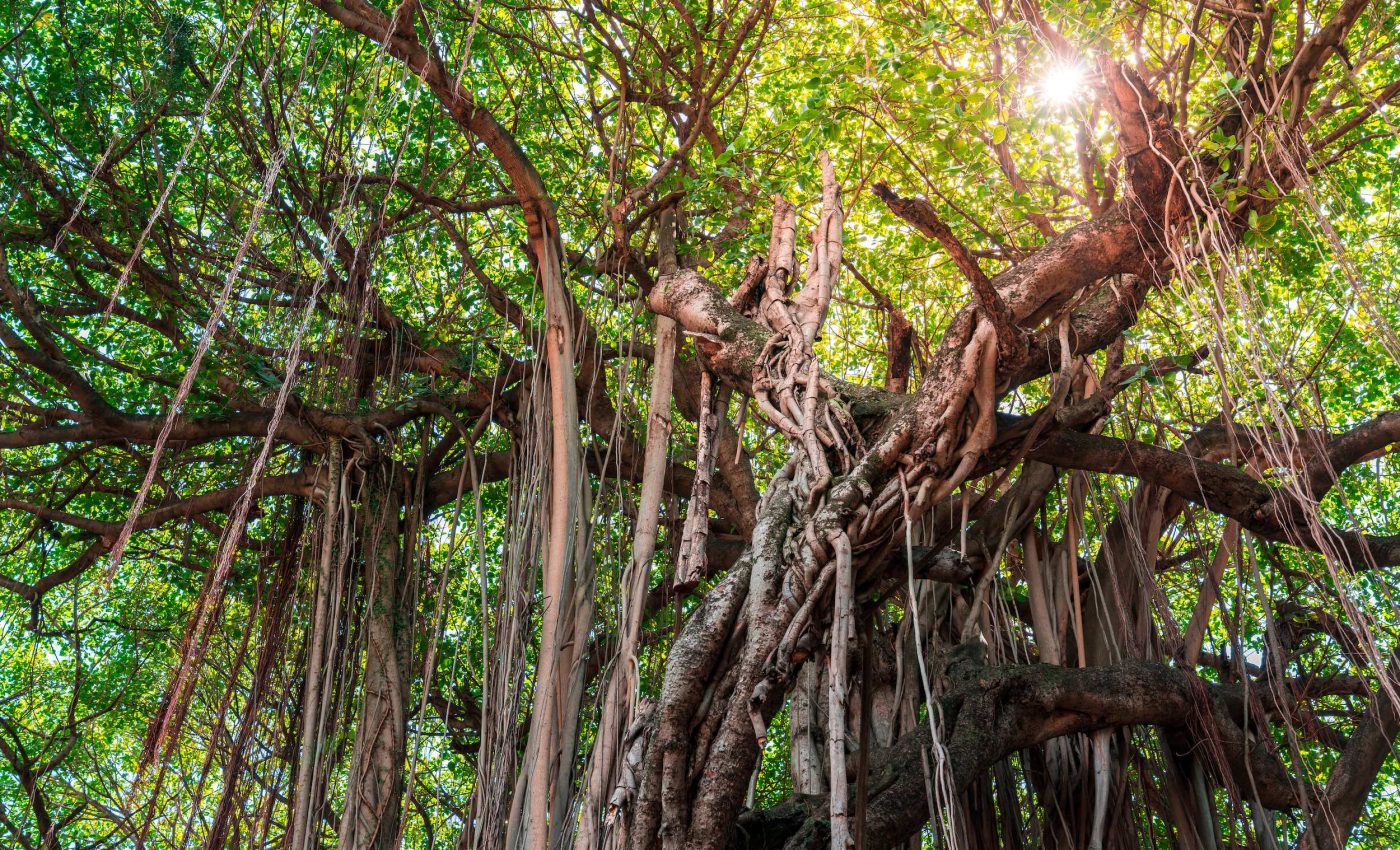
Lianas are choking tropical forests and disrupting carbon storage
Tropical forests, home to about half of the world’s biodiversity, play a vital role in stabilizing the planet’s climate. Every year, they absorb roughly as much carbon dioxide as the entire European continent emits. However, lianas, such as passionflowers and other species, are increasingly dominating tropical forests.
“Lianas can smother and kill trees. When they dominate, the forest becomes choked, and mainly lianas continue growing over fallen trees,” explained ecologist Marco Visser from University of Leiden’s Institute of Environmental Sciences (CML).
During his doctoral research in 2016, Visser was the first to model liana proliferation using methods from infectious disease research.
“Lianas – such as passionflowers and numerous other species – can be compared to tapeworms. They intercept trees’ resources and can more than double tree mortality.”
A global surge, not just in the Americas
Until recently, the increase in lianas was thought to be mostly a problem in South and Latin America. However, PhD candidate Manuela Rueda-Trujillo, supervised by Visser, reviewed hundreds of studies on lianas. The findings, published in the journal Global Change Biology, reveal a far more alarming trend.
“A liana pandemic has been raging for more than 30 years, with their prevalence rising by 10% to 24% every decade,” Visser said. This pattern is not confined to the Americas. The surge is occurring in tropical forests across the globe.
In regions where lianas gain the upper hand, the consequences are devastating. Forest regeneration can come to a standstill, and carbon storage may fall by as much as 95 percent. “That’s almost equivalent to deforestation,” Visser warned.
CO₂ fuels liana domination
What is driving this explosive growth? Visser points to the increasing concentration of atmospheric CO₂ as a key factor.
“All plants grow faster with more CO₂, but lianas benefit even more. They cheat – they don’t invest in structural support, borrowing it from trees instead, and their leaves require less energy and nutrients to produce.”
Unlike trees, which must grow sturdy trunks to reach the sunlight, lianas simply climb their neighbors. Once they reach the canopy, they spread their leaves over tree crowns, stealing most of the sunlight. This aggressive growth strategy allows lianas to outcompete trees in the race for light and resources.
Seeing lianas from space
In a recent study published in the journal Ecology, Visser and his team, along with American and British collaborators, demonstrated that lianas can be spotted from space. For the first time, they explained why these vines stand out in satellite imagery.
Visser developed mathematical models predicting how light interacts with liana leaves. To test these predictions, the team used cranes to reach treetops in Panama and measure leaf properties directly. Their findings confirmed the models were correct.
Liana leaves are different from tree leaves in two key ways. First, they reflect more light and infrared radiation. Second, they lie flatter, forming a dense, opaque cover. “Lianas are true egoists,” Visser said. “Tree leaves tilt, allowing light to reach lower neighbors – even the forest floor gets some sunlight. But lianas leave almost nothing for others.”
These distinct properties make liana infestations detectable in satellite images. “Now that we understand why lianas are detectable from space, we can develop targeted techniques to map their spread and impact worldwide.”
Should we cut them down?
Given their destructive impact, is it time to start cutting lianas to protect tropical forests? Visser advises caution. “We shouldn’t intervene until we fully understand their ecological role. They bear fruit year-round and are vital for rare monkey and bird species.”
While lianas threaten carbon storage and forest regeneration, they also play essential roles in supporting wildlife. Some species depend on them for food and shelter, making any broad removal efforts risky.
Instead, Visser emphasizes a different solution: addressing climate change. Rising CO₂ levels give lianas an edge over trees. Slowing or reversing climate change is, according to him, the only long-term way to curb the liana takeover. “The only necessary action is halting climate change, which will also slow the expansion of lianas,” he said.
An emerging global challenge
The growing dominance of lianas poses a complex challenge for conservation. These vines are not invasive outsiders but native components of tropical forests. Yet, human-driven changes in the atmosphere are tipping the balance in their favor, with far-reaching consequences.
Thanks to new insights from satellite monitoring and field research, scientists are now better equipped to track and understand this phenomenon. But as lianas continue their relentless spread, the clock is ticking for the world’s tropical forests – and for the vital services they provide.
—–
Like what you read? Subscribe to our newsletter for engaging articles, exclusive content, and the latest updates.
Check us out on EarthSnap, a free app brought to you by Eric Ralls and Earth.com.
—–













